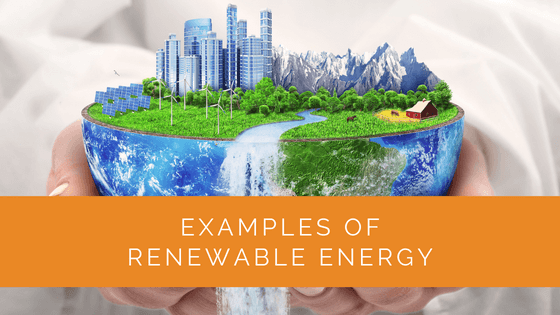Renewable or alternative energy is rising as innovation lowers prices and begins to fulfill the promise of a cleaner future. Wind and solar energy in the United States are smashing records and being incorporated into the national power system without affecting dependability.
This implies renewables progressively replace unclean fossil fuels in the electricity industry, decreasing carbon and other pollution emissions.
However, not every “renewable” energy source is environmentally friendly. When considering the influence on wildlife, extreme weather, and other concerns, biomass and huge hydropower dams offer complex trade-offs.
Here’s everything about the many alternative energy sources and ways to use these new technologies in your house.
Contents
- 1 Key Takeaways
- 2 What Exactly Is Renewable Energy?
- 3 Here Are Some Examples of Familiar Renewable Energy Sources:
- 4 Why Are These Significant?
- 5 Some Examples
- 6 Can It Replace the Role of Fossil Fuels?
- 7 What Impact Will It Have on the Environment?
- 8 Is It Economically Feasible?
- 9 Which Is the Most Effective Type?
- 10 Expert Insights From Our Solar Panel Installers About Examples of Renewable Energy
- 11 Final Thoughts
Key Takeaways
- Renewable energy sources, such as solar and wind power, are becoming increasingly important in the United States and worldwide due to their ability to reduce carbon emissions and pollution.
- Common examples of renewable energy sources include solar, wind, hydroelectric, biomass, geothermal, and ocean energy.
- Renewable energy is vital for environmental sustainability, as it emits fewer greenhouse gases, benefits human and animal health, and contributes to stable energy costs. It also has the potential to replace fossil fuels, although a mix of production methods may be necessary, and it is becoming more economically feasible as fossil fuels become scarcer. Renewable energy sources vary in efficiency and site dependency, with wind power and solar energy being among the most efficient options.
What Exactly Is Renewable Energy?
This energy is produced from natural sources, which have a faster regeneration capacity than consumption. Two such examples of constantly renewing sources are the sun and wind. Alternative energy sources flourish and can be found all around us.
On the contrary, fuels like oil, gas, and coal are non-renewable and require millions of years to develop. Energy is generated by fossil fuels, which release hazardous greenhouse gases such as CO2.
Renewable energy produces much fewer pollutants than fossil fuels. Shifting from fossil fuels to renewable energy accounts for most emissions and is essential for tackling climate catastrophe.
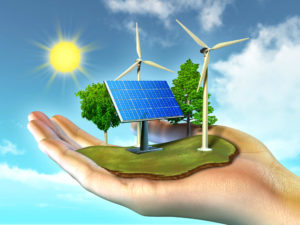
Here Are Some Examples of Familiar Renewable Energy Sources:
The following are the most common forms of renewable energy:
Solar Energy
Solar is one of the most abundant sources of energy. It can be easily utilized even in overcast conditions. Did you know that the earth’s interception of solar energy is higher than humanity’s energy use? The pace of solar energy is 10,000 times larger than the energy used by humans.
Solar technologies have the potential to provide heating, good lighting, energy, and fuels for a wide range of uses. Solar panels or reflectors are used in solar power plants to concentrate sunlight and convert it into electricity.
Moreover, the cost of these panels has dropped drastically in the past decade, making them not just accessible but frequently the cheapest source of power. They have a life of around 30 years and offer a variety of colors based on the material being used in their production.
Wind Power
We’ve gone a long way since the days of windmills. Nowadays, turbines as high as buildings and nearly as broad in diameter keep guard worldwide. Wind energy rotates the blades of a turbine, which fuels a generator and generates electricity.
Wind power has been utilized for centuries, but in recent years, offshore and onshore wind energy tech has improved to enhance power production – with higher turbines and greater rotor diameters.
Even though average wind speeds differ significantly by region, the world’s technological capability for wind energy surpasses worldwide electricity output. There is adequate potential in most locations worldwide to permit large wind power deployment.
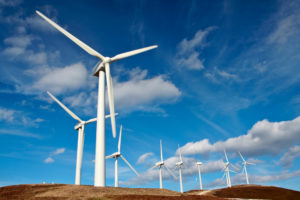
Hydroelectric Energy
Although hydropower is the most significant renewable energy source for electricity generation in the US, wind power is anticipated to overtake it shortly.
Hydropower uses water, typically fast, like in a big river or waterfalls —to generate energy by rotating the turbine blades of a generator.
Large hydropower projects, often known as mega-dams, are frequently seen as non-renewable energy sources nationally and worldwide. Mega-dams redirect and diminish natural flows, making it difficult for animals and humans to use rivers.
Hydropower is now the most important renewable energy source in the electrical industry. It depends on relatively steady seasonal rainfall and can be harmed by sudden droughts or ecosystem shifts that affect rainfall patterns.
Biomass
The control of this energy source is equally important if it is labeled renewable power. Biomass-based power plants generate energy by burning waste biomass, sawdust, and flammable agricultural waste.
While the combustion of these substances produces greenhouse gases, the emission is significantly lower than some of those produced by petroleum-based sources.
Biomass is sometimes misrepresented as a cleaner, alternative energy and a better replacement for fossil fuels such as coal for energy generation. However, new research suggests that several types of biomass, particularly those derived from forests, emit more carbon than coal and oil.

Geothermal Power
This sort of clean power makes use of thermal energy contained beneath the Earth’s mantle. Although this resource takes drilling to reach, raising concerns about the environmental effect, it is a massive resource once accessed. Wells or other methods are used to harvest heat from geothermal sources.
Geothermal power has been utilized for several thousand years to bathe in thermal baths, and that same resource could be applied to power turbines and create electricity.
The energy buried beneath the US alone is sufficient to generate ten times the quantity of electricity that coal now produces. While certain countries, like Iceland, possess immediate access to geothermal energy, it’s a source dependent on geography, and drilling methods must be carefully supervised to be entirely ‘green.’
Ocean Energy
Wave and tidal energy remain in the early stages of research. Some tidal power techniques, like tidal barrages, that function similarly to dams and are positioned in lagoons or ocean bays may affect species.
Why Are These Significant?
Sustainable energy is vital for the environment since it substitutes more ecologically friendly options for the negative consequences of carbon fuels. Green energy is obtained from natural sources and is usually renewable and green, emitting no or little GHGS, and is often readily available.
Even if the whole life span of a renewable energy source is considered, it has significantly lower greenhouse gas emissions than all fossil fuels. It emits little or small amounts of airborne pollutants. This benefits the environment and human and animal health, as both need oxygen.
Renewables can also contribute to stable energy costs since they are frequently generated locally and less susceptible to geopolitical crises, price spikes, and supply chain interruptions. The economic benefits include creating jobs by building structures that typically serve the communities where the employees work.
Because energy is produced locally through sources like wind and solar power, the power generation is much more versatile and less reliant on centralized sources, which can cause disruption, in addition to being less robust to a weather-related changing climate.
Renewables provide a low-cost solution to many of the world’s energy needs. This will only grow as costs fall, increasing the availability of green power, particularly in developing nations.
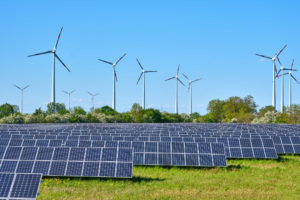
Some Examples
There are several examples of renewable power today, from energy generation to thermal heating structures and transportation. Here are some examples of sectors that are looking at sustainability practices:
Transportation
Renewable fuels and energy are increasingly being used for transport in many industries. Automotive seems to be an evident example of electrification progressing toward replacing fossil fuels, but aviation and construction are also actively researching electrification.
Heating in Building
Alternative energy options are employed in many structures, from substantial corporate complexes to homes. Some examples are solar-powered water heaters, biomass-fuelled boilers, pure geothermal heat, and renewable-energy cooling systems.
Industrial Procedures
Biomass or renewables can be used to provide sustainable heat for economic processes. Hydrogen is becoming a significant alternative energy source for the concrete, steel, iron, and chemical sectors.
Can It Replace the Role of Fossil Fuels?
Alternative energy has the potential to replace carbon fuels in the coming years; however, it might necessitate a mix of production methods. Geothermal, for instance, is very successful in areas where this source is easily accessible, but solar or wind energy might be best suited to different geographic regions.
However, by combining different renewable energy sources to satisfy our demands and advances in developing and producing these sources, we have every reason to anticipate that fossil fuels might be phased out.
We remain a few decades away from this unfolding, but mitigating climate change, enhancing the environment, and transitioning toward a more sustainable world is unavoidable.
What Impact Will It Have on the Environment?
Alternative energy has significant environmental advantages since it is generated using natural resources like the sun, air, and water. Such energy sources, which are constantly formed, are the polar opposite of the unstable, carbon-emitting coal and oil that have powered humanity for over a century.
Developing electricity without carbon impact is a significant step toward a more ecologically responsible future. If we could somehow utilize it to satisfy our electricity, industrial, and transportation demands, we would be capable of significantly lessening our environmental effects.
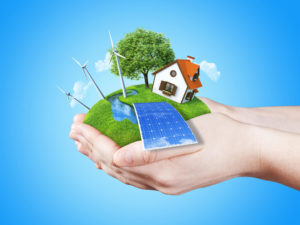
Is It Economically Feasible?
Assessing green energy’s economic feasibility necessitates a comparison to carbon fuels. The truth is that when easily accessible fossil fuels become scarce, the value of this kind of energy will skyrocket.
Greener sources of energy are becoming more affordable as fossil fuels get pricier. Other reasons that favor green energy include the capacity to generate relatively cheap localized energy solutions, like wind and solar farms.
The interest, funding, and advancement of green renewable technologies drive down prices as we expand our knowledge and build on previous accomplishments.
Which Is the Most Effective Type?
Renewable efficiency is partially site-dependent since when you have the right conditions, like frequent and intense sunshine, it is simple to produce a quick and effective energy solution.
To effectively evaluate different energy sources, however, the whole life span of a source of energy must be examined. This involves determining how much power was utilized to develop the green power source, calculating how much power can be converted into energy, and any environmental clearance necessary to produce the renewable source.
Wind farms are now regarded as the most efficient form of renewable energy since they require less refinement and purification than solar panels. Composite innovation and testing advancements have helped enhance the lifespan and, hence, the turbines’ Levelised Energy Cost (LEC).
Yet, the same may be true about solar panels advancing rapidly.
Renewable solutions also require little further energy expenditure once they are created since they often employ an easily renewable source of electricity, like the wind. In reality, coal’s overall efficiency of useable energy is about 29 percent of its initial energy value, whereas wind power returns 1164% of all its overall energy intake.
Expert Insights From Our Solar Panel Installers About Examples of Renewable Energy
Renewable energy sources like solar and wind are pivotal in reducing carbon emissions and pollution. As technology advances, these sources become more efficient and cost-effective, making them integral to our transition toward a cleaner future.
Renewable Energy Specialist
Solar energy is not only abundant but also one of the most versatile renewable energy sources. With the significant drop in solar panel costs over the past decade, more households and businesses can harness this sustainable power to meet their energy needs.
Solar Installation Expert
Hydroelectric energy, despite some environmental concerns, remains a major contributor to renewable energy production. By improving the design and management of hydropower projects, we can maximize their benefits while minimizing their impact on local ecosystems.
Sustainable Energy Consultant
Final Thoughts
Alternative energy appears to be a component of the world’s future, providing a greener substitute for many of today’s power sources. These constantly renewed energy sources are excellent for the planet, creating jobs and being economically feasible as innovations continue.
The reality would be that fossil fuels must be phased out since they don’t offer a sustainable answer to our energy demands. We can establish an utterly sustainable tomorrow for our energy supply by developing a range of renewable options that do not harm the planet we all reside on.
Owners and tenants may use clean energy at residences by purchasing green energy, constructing renewable systems to generate power, or using renewables for water and housing cooling and heating.
About the Author
Solar Panels Network USA stands at the forefront of solar energy solutions, driven by a team of seasoned solar engineers and energy consultants. With over decades of experience in delivering high-quality solar installations and maintenance, we are committed to promoting sustainable energy through customer-centric, tailored solutions. Our articles reflect this commitment, crafted collaboratively by experts to provide accurate, up-to-date insights into solar technology, ensuring our readers are well-informed and empowered in their solar energy decisions.

